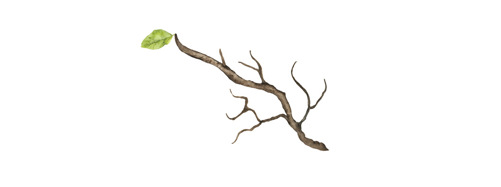
The words of the autopsy report used to smolder and smoke in my brain. The weight of her heart. The weight of her brain. The mystery of the contusions. How well I know the “irregular scar on the right volar wrist,” which was the time she was rushing, as usual, and cut her wrist on the jagged edge of an open tin can. The ER doctor thought she’d attempted suicide. She was married to a man, then. So was I.
Lia was my _____, and she died in 2011. The fact of her death is clear. Who she was to me is not. She was my professor and my mentor, and then she was my colleague, and then she was also my lover, and then she was my roommate. Or she was my partner. She never liked the words “girlfriend” or “wife.” They frightened her.
When I try to organize this story, it tangles into more knots. I used to think of it as “our” story, until I began to understand it was really her story and my story, two parallel streams of lives that braided for a little while and then diverged. And hers? It seeped beneath the surface. It evaporated and became air. It spread thin until the soil and the plants absorbed it. It didn’t stop. That’s what I know, now, about our lives. Or what I think I know.
There was a time when all I could think about was death. Her death. My responsibility for her death. My death. Everyone’s deaths. There was a time when I walked down the halls of the high school where I taught and death flashed in every teenage face I saw. Each of you will die. If she could die, at forty-two, then no one was safe. Her death ripped open reality: I saw its truth, and I grew pale with it.
The autopsy report was my own. How much would my brain weigh, when it was weighed? Which scars would they record? The one on my index finger, from the late night when Erin and I were doing dishes in her New Jersey apartment drunk, and I grasped a broken wine glass? Would the autopsy report on the tattoo on my lower back, the belly button ring at my navel? Would my stomach also contain “brown liquid material”? And how old would I be? How long would I last in this life?
Slowly, the gaping truth faded. I healed enough to forget the horror a little. It’s been four years since Lia died. When I wake in the mornings now, I notice the light. I’ll die someday, but later. I have a good life to live first.
But I still need to map the journey I took through grief. A map labels landmarks with the opinions of the cartographer, it records distances and sizes, it marks routes and dangers. Maybe someone who needs it will fold this map into a neat square, store it in her pocket, pull it out at each trail juncture that confuses her, and in the open spaces that seem to have no trail at all. She’ll learn maps are worthless in the dark and in the fog, but maybe my map will help a little. If only to comfort, to say: someone else visited this place; someone else survived to make this map.
Once, when I was nineteen, I hiked one hundred miles across northern Scotland alone, including a climb up Ben Lomond. The fog on the frigid March day I climbed that mountain was so thick I lost sight of Loch Lomond and the surrounding valleys within minutes of climbing, and my boots kept slipping on the ice-covered rocks. Then, all of a sudden, the fog thickened to a blizzard: a whiteout. I could not even see my hands in front of my face. The wind roared and whistled off the edge of a cliff somewhere, and snow was falling so fast it covered my boots where I stood. I couldn’t keep climbing up, since I didn’t know where the cliffs were. The ice was too treacherous for me to descend. The temperature dropped, and I shivered in my thin yellow rain jacket. No one knew exactly where I was. Terrified, I sank onto a boulder and burst into tears. A little while later, I wrote a shaky letter to my family, my teeth chattering. I told them I loved them and was sorry I’d been a fool. I ate my Snickers bar and hugged myself, waiting for the sleepiness literature promises as the first sign of death from hypothermia.
Instead, after a long time, the whiteness seemed to lift a little, and I noticed for the first time a set of footprints in the snow. They appeared to begin at my boulder and lead up the mountain. I set my feet in them (they were large, a man’s) and followed them safely to the summit and the wide and well-marked “tourist trail” back down to Loch Lomond.
Those footprints saved my life.
Who knows? Maybe this map of words I’ve made will be footprints for some other grieving person. Maybe this map will save someone else’s life.